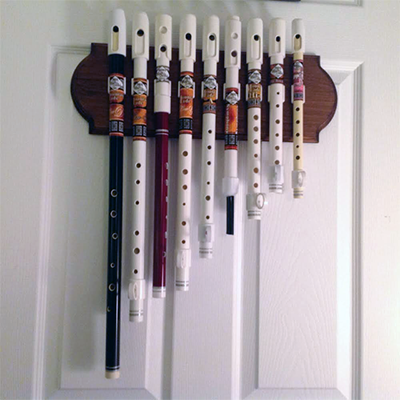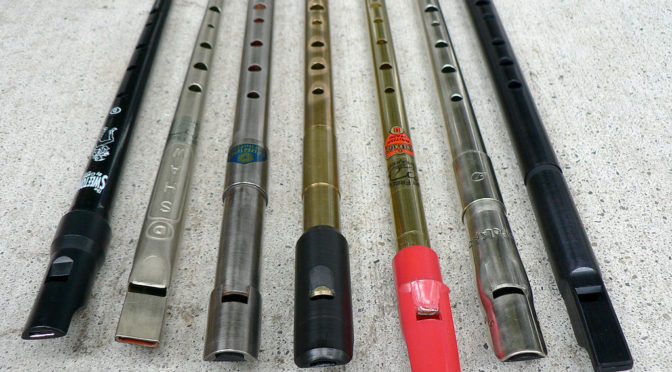In making urns, I have used both red cedar which has the smell of a lead pencil when cut and Port Orford cedar from the west coast which has a delightful perfume smell like flowers. Port Orford is hard to obtain in large size and in extra clear grades. Ten years ago I purchased a large lot of this cedar as a high grade lot to make urns from. This cedar was stored inside an insulated tractor trailer and eventually lost most of its moisture and is very dry and straight grained. Port Orford is so waterproof that
you can build a boat from it, never paint it and the boat will survive salt water and last for a hundred years!

This is a Port Orford Cedar creation I call The Floating Amphora that you may find interesting. The vessel still retains its wonderful aroma after many years
Wooden whistles are always interesting. I have been involved in wood turning and making urns and artistic pieces on the lathe for over forty years. Because I know a bit about wood and its inherent problems, I have rethought the manufacture of whistles from this material. Some of the opinions I had originally on using wood can be balanced by using new techniques in preparing the wood and replacing the water content even in seasoned and aged wood.
Native Americans basically got it right when they made flutes from cedar which is inherently waterproof due to its high oil content. Lightning struck cedar is the cedar of choice for many makers of these flutes and the crystallizing effect does have a bearing on the instrument. Lightning struck cedar has been made harder than regular cedar and therefore is easier to work than regular cedars that tend to be very soft.
A new way to manufacture wooden whistles along with templates for the design has been developed. This new design whistle is unique and new to whistle making and makes a visually striking instrument. Whistles that I made from Port Orford cedar over the summer, have a lovely sound and are extremely durable. They do not acquire moisture from saliva and will not clog. Because this cedar has been properly aged, it is feather light in weight and the color is clear to a slightly golden color with a very nice grain.
How of many of these whistles will be available for sale? The first one hundred have already been purchased by a private collector on a ship as ready basis. It will be some time before any consideration to further production can be taken into account. Having a benefactor for the WhistleSmith is a very exciting development!
I do have an extensive amount of information on processing wood for turning and some neat tricks for processing raw wood to product that can be a lot of help to anyone who is interested in pursuing this area.
I will be posting individual items on the WhistleSmith News on each of the new developments as things proceed in the next few weeks. Be sure to sign up for the News Letter where you can get immediate updates. I promise you will be entertained by some unique new designs. You never know, The Magic Whistle may show up and you wouldn’t want to miss that!
In the past six month, I have had the privilege to talk and e-mail to dozens of folks who have purchased WhistleSmith whistles and flutes and have received input that is impossible to obtain any other way.
As I have written up the e-mails for posting, there have been some areas that bear listing as a reference for further development. Probably the first item to be taken care of is the matter of whistle colors. White whistles have a number of things going for them and although it might be repetitive, I’m going list them right now.
1. White whistles and flutes do not require the extra work in masking and painting and therefore cost less.
2. White whistles are easy to see if they are misplaced when camping and outside when camping.
3. White whistles play better under very hot conditions and draw very little heat.
4. White whistles are easier for children to maintain because you can see when they need cleaning.
The problem is that folks like color on their whistles and how many of each color whistle or flute do you need to stock and what colors do you need to have on hand? Over the past two years, I have narrowed the color selection down to one that works for almost everyone. Jet Black, Bright Red, Dark Green, Deep Maroon, Dark Brown and Cornflower Blue will still be the major colors that are always offered. Navy Blue,Magenta, Rose Pink, and Orchid Purple will also be offered as additional colors that appeal to a large
group of whistlers. Silver striping will be standard on all white whistles and the decals on all whistles have been resized and updated to give a more uniform look.
For those folks that want a colored whistle in a model that has previously only been made in white, I am offering a custom paint package. Buy your whistle and then purchase the paint package in the color you wish your whistle to be finished in. Silver striping and pewter silver stippling will be included at no extra charge. The price for the paint package will be posted with a full description on both eBay and this website with Buy It Now information. This option will be extra nice if you are purchasing whistles
as sets and want a matching color combination on the entire group.
Before I get a dozen or so calls on the subject…The prototype whistles I am going to mention next will not be for sale on eBay or anyplace else. Most will never see production, but they will all be available for study along with information on how they were made. Prototypes are part of the archive of whistles and flutes that are the property of WhistleSmith to be preserved and studied for future changes or improvements to the product line. WhistleSmith does not sell seconds, prototypes, or whistles with defects
on eBay or anywhere else.
I made four dozen completely new design prototype whistles in various materials to test for ideas that might make it into a production whistle. The idea was to find out as much as possible about these materials, how they work for different applications and document the material as far as pluses and minuses on machining, finish, sound and of course, durability. All this information is going to be available at the workshop this summer and I’m sure it will be enlightening to everyone attending. At no point in history
have there been as many materials (both man made and natural) available to a whistlesmith as there are today.
Aluminum in various finishes has been a predominant material in testing. Since I obtained the samples and test material from a major manufacturer of extruded aluminum, I have been able to proceed with putting together a complete set of prototypes whistles. These whistles are a new concept design and are exceptional in appearance. Aluminum passes most tests for durability(except bending and denting), is easily machined and can be finished in a variety of ways. Right now, aluminum seems to be cost effective in
small size whistles and a bit more costly in the larger whistles. Aluminum is most efficient at dissipating heat and there is where a major problem lays. Below 68 degrees, which is a warm temperature, large bore aluminum whistles such a the Low D play too cold and collect condensation in the bore. No matter how hard they are played, they stay much too cool to be practical if played outdoors and in cold weather. One of my testers after playing the Low D in aluminum in the barn on a cool day, suggested we could
wrap the whistle in insulation foam to take care of that problem. I can only hope he was just joking. Small bore aluminum whistles seem to be fine and play well down to about 65 degrees (after which they get noticeably flat).
Small bore prototypes are finished and no further development is necessary at this point. However, I am not going to recommend aluminum for outdoors cold weather playing. Aluminum makes a very nice concert type whistle where temperature is not a problem. Aluminum scratches and nicks easily under hard use, and requires the owner to treat polished aluminum whistles with care. I have a very good source for coated aluminum tubing that promises to be much tougher to scratch and seems (at this point in time) to be
more suited for whistle production. I am doing a complete data base on aluminum and finishes. Information on my conclusions and sources will be available on request to anyone interested in this area of whistle development when information is compiled and complete.














